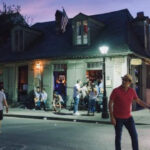Located in the heart of San Francisco’s bustling Financial District, One California Street stands as a testament to mid-century modern architecture and the city’s dynamic growth. While not the tallest skyscraper in the Bay Area, this 438-foot tower holds a prominent position, overlooking the entrances to the busy Embarcadero BART station and situated near the historic San Francisco Ferry Building. Completed in 1969, One California Street quickly became a landmark, initially ranking as the fifth tallest building in the city until 1971, solidifying its place in San Francisco’s skyline.
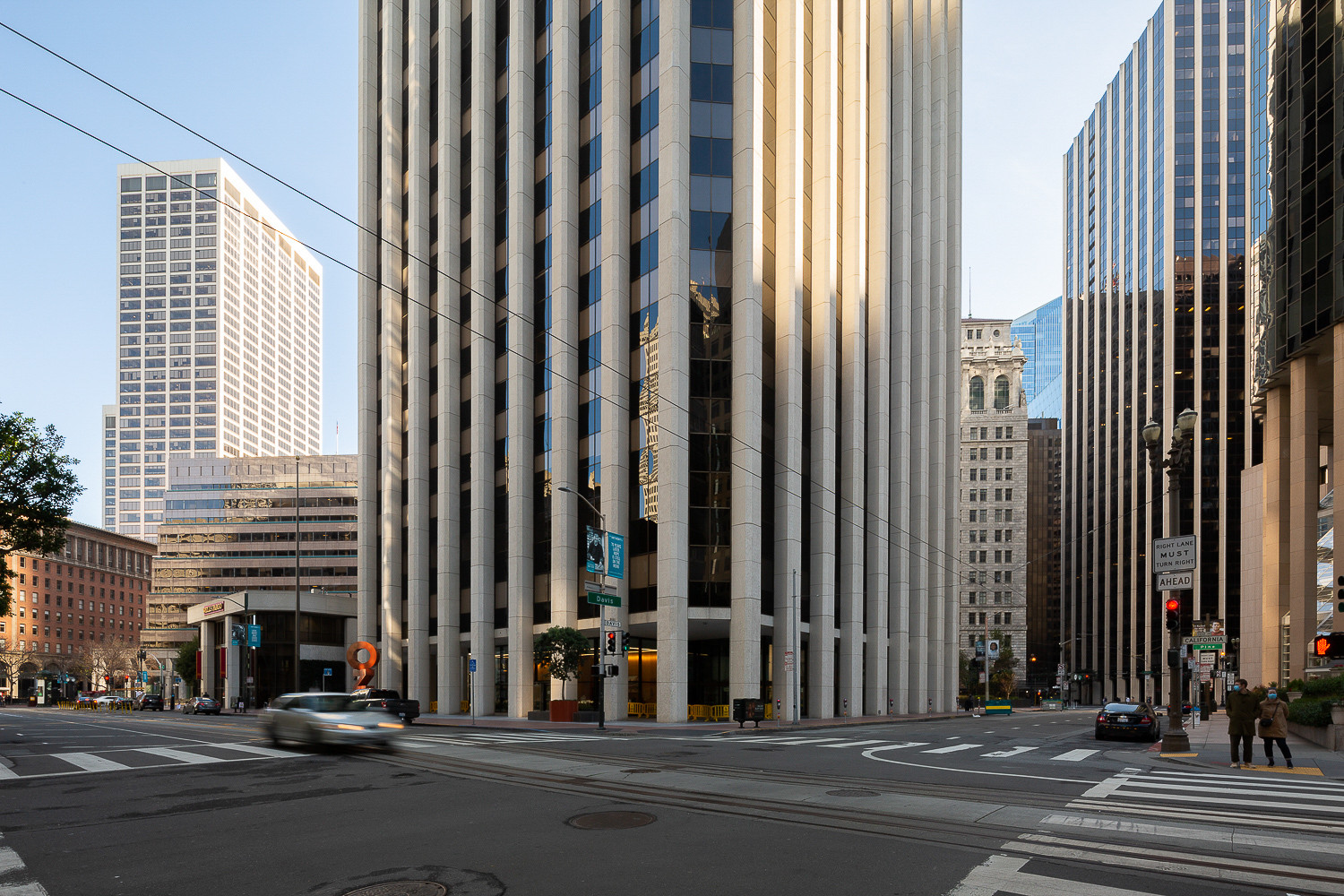 One California Street with One Market Plaza tower on the left, showcasing mid-century modern architecture in San Francisco's Financial District
One California Street with One Market Plaza tower on the left, showcasing mid-century modern architecture in San Francisco's Financial District
Prime Location and Building Features
Owned by Shorenstein Properties since the 1990s, One California Street offers a substantial 495,280 square feet of floor space across its 32 stories. Thirteen elevators efficiently service the building, primarily designed for office use. However, it also includes 2,830 square feet of retail space, adding to the vibrant street-level activity. Understanding the needs of modern professionals, the building provides a 135-car underground garage, bicycle storage for 48 bikes, and a commuter-friendly locker room with showers. This combination of features makes One California Street a highly desirable location within the Financial District for businesses of all sizes.
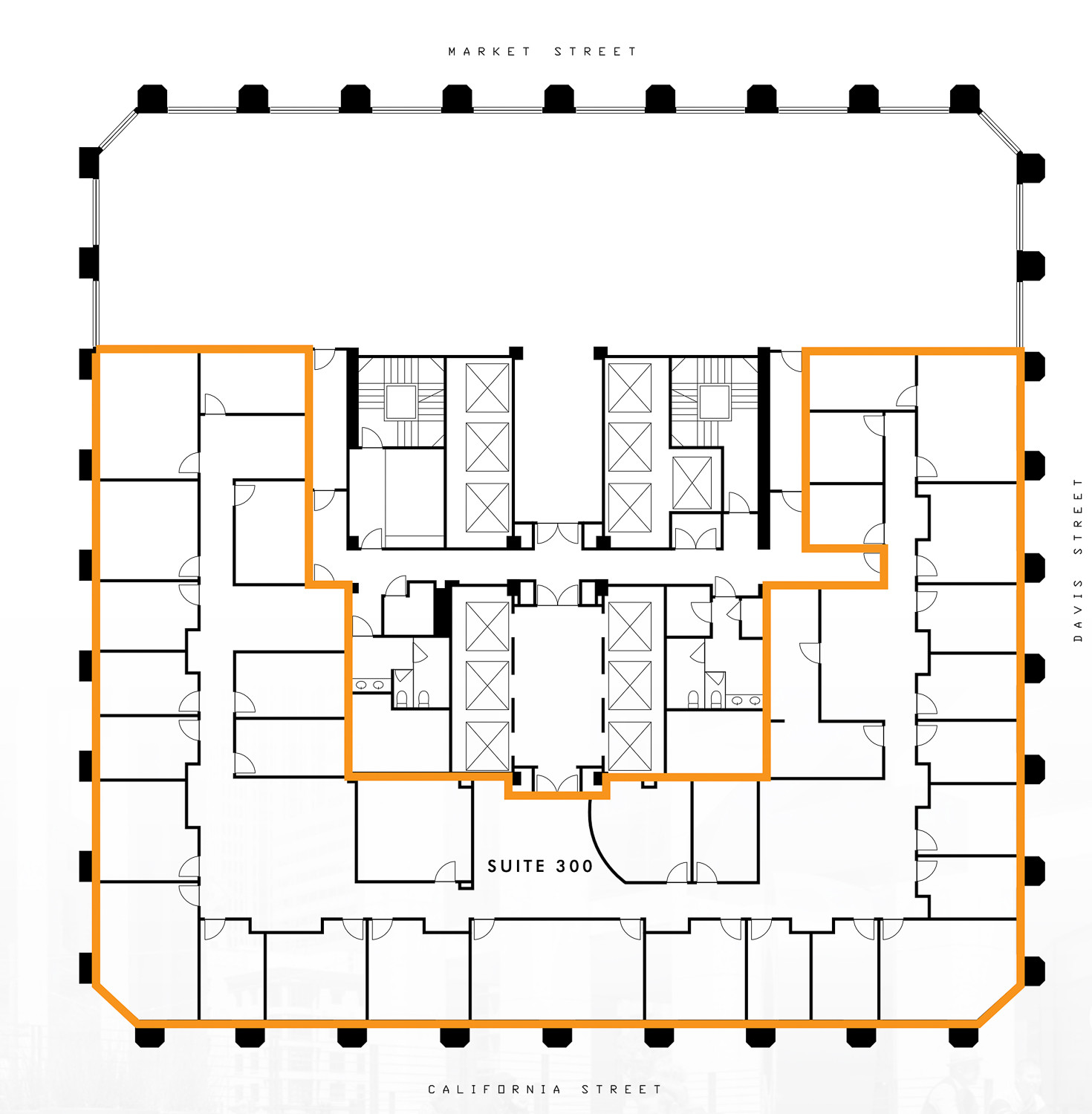 Floor plan of Suite 300 at One California Street, offering 10,370 sq ft of office space in the Financial District
Floor plan of Suite 300 at One California Street, offering 10,370 sq ft of office space in the Financial District
Architectural Design by Welton Becket Associates
The architectural vision behind One California Street comes from Welton Becket Associates, a renowned firm prominent in the 1960s. Their design for One California Street is characterized by a striking contrast between the robust sandblasted white concrete columns and the sleek, dark black curtain wall system. This aesthetic embodies the Modernist architectural style that was influential during this period. Welton Becket Associates’ impact on the Bay Area skyline extends beyond One California Street, with their portfolio including other notable skyscrapers such as 50 California Street, McKesson Plaza, and One Market Plaza. Their most iconic design, however, remains the cylindrical Capitol Records Building in Hollywood, a landmark of mid-century modernism.
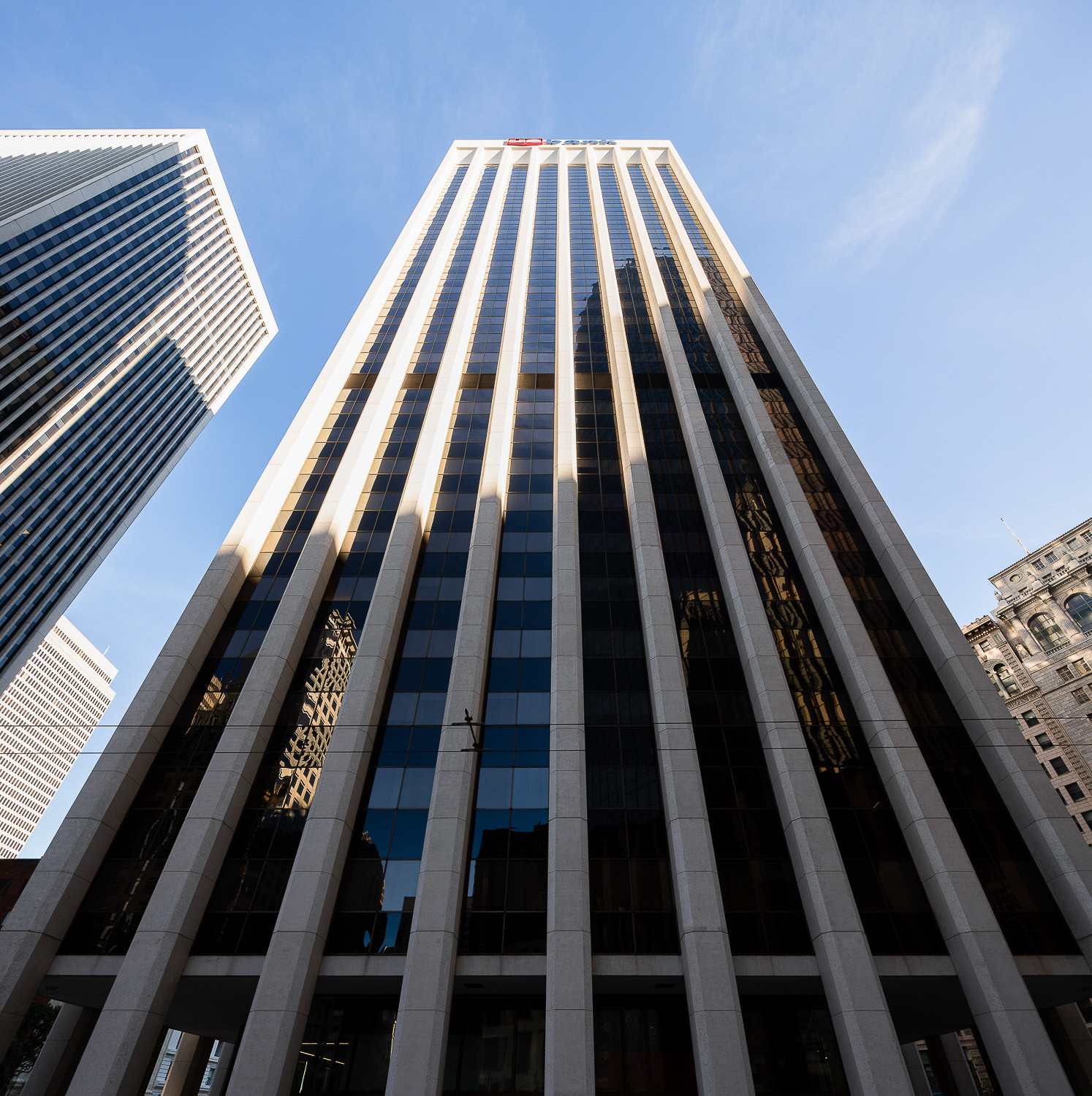 Looking up at One California Street, highlighting its modernist design and concrete pillars in San Francisco's Financial District
Looking up at One California Street, highlighting its modernist design and concrete pillars in San Francisco's Financial District
Historical Context and the “Manhattanization” of San Francisco
One California Street’s completion in 1969 coincided with a significant construction boom in San Francisco. It was built in the same year as two other iconic structures: SOM-designed 555 California Street and Becket-designed McKesson Plaza. These skyscrapers, with their bold designs, became symbols of this era of rapid development. However, this period also sparked concerns about the “Manhattanization” of San Francisco, reflecting anxieties about the changing urban landscape, increased density, and perceived social changes. This “Manhattanization” debate was intertwined with broader societal trends like the “White Flight” to the suburbs, highlighting the complex social and urban dynamics of the time.
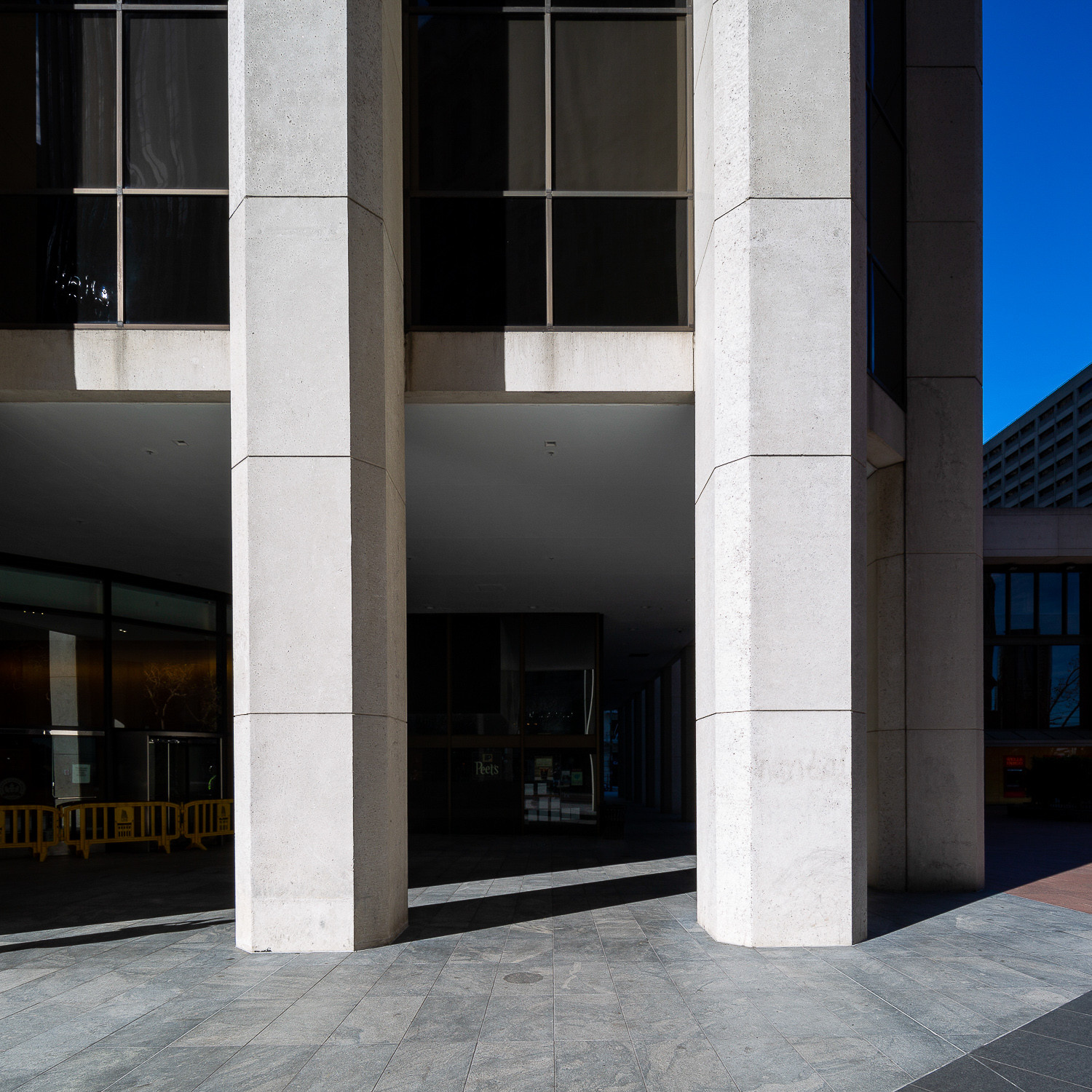 Close-up of the concrete pillars of One California Street, showcasing architectural details in San Francisco's Financial District
Close-up of the concrete pillars of One California Street, showcasing architectural details in San Francisco's Financial District
Corporate Identity and Modern Upgrades
Originally named the Mutual Benefit Life Tower, One California Street has carried different corporate identities throughout its history. It was later known as the Airtouch Building and, since 2005, has prominently displayed US Bank signage at its peak. Notably, One California Street is among the few buildings in San Francisco that retain corporate signage above 100 feet, a feature now restricted by city planning codes for newer constructions. Today, One California Street offers Class A office spaces and boasts LEED Gold Certification, reflecting its commitment to sustainability and modern standards. Following its acquisition by Shorenstein Properties, the lobby underwent a significant remodel, featuring elegant wood finishes, polished granite, and meticulously hand-fitted tiles, further enhancing its appeal as a premier office location in the Financial District.
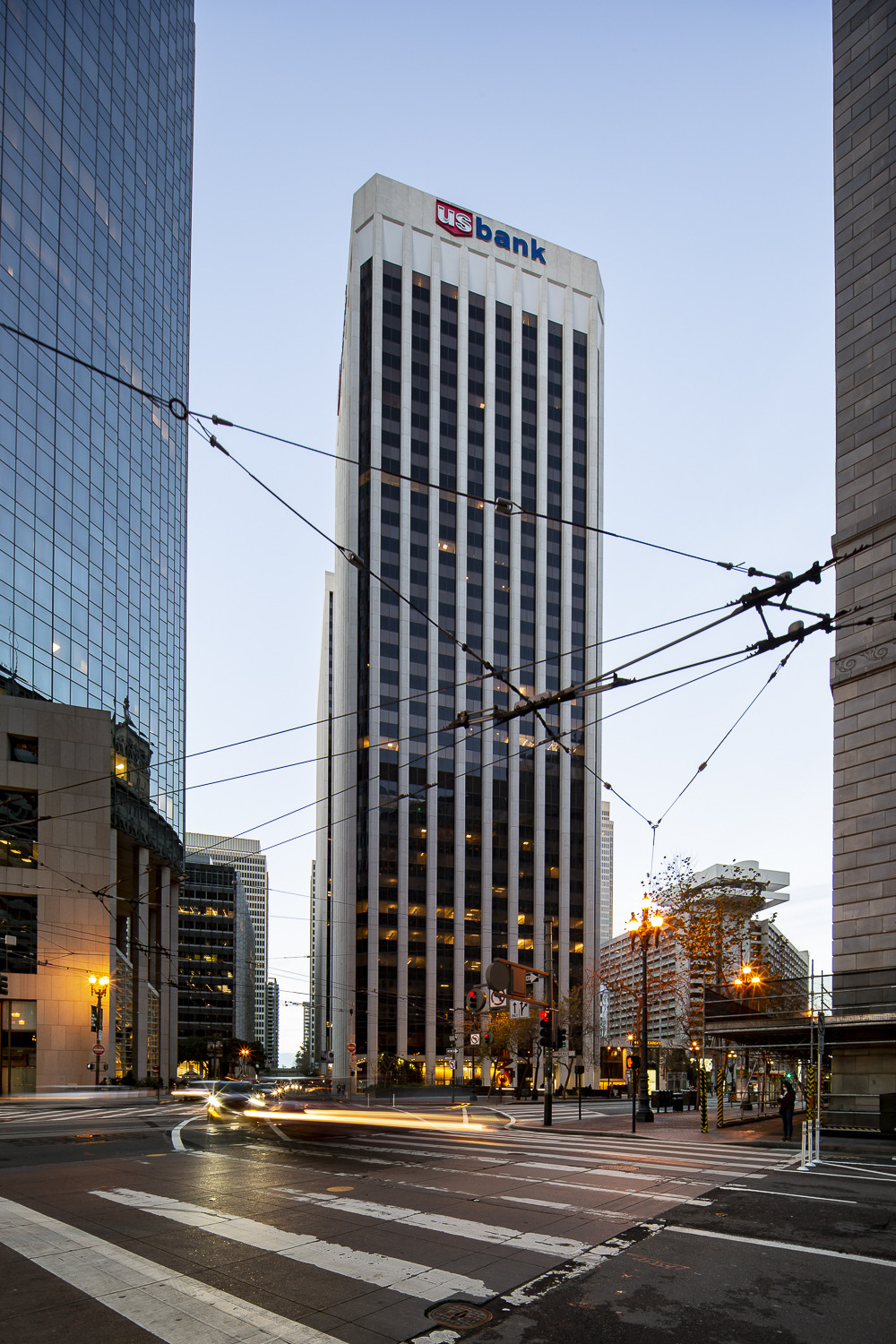 One California Street illuminated at night, a nighttime view of this Financial District landmark in San Francisco
One California Street illuminated at night, a nighttime view of this Financial District landmark in San Francisco
In conclusion, One California Street stands as more than just another building in the San Francisco skyline. It represents a pivotal era in the city’s development, showcasing significant architectural design and holding a prime location in the Financial District. Its history, features, and modern upgrades make it a noteworthy landmark in San Francisco’s urban landscape.

